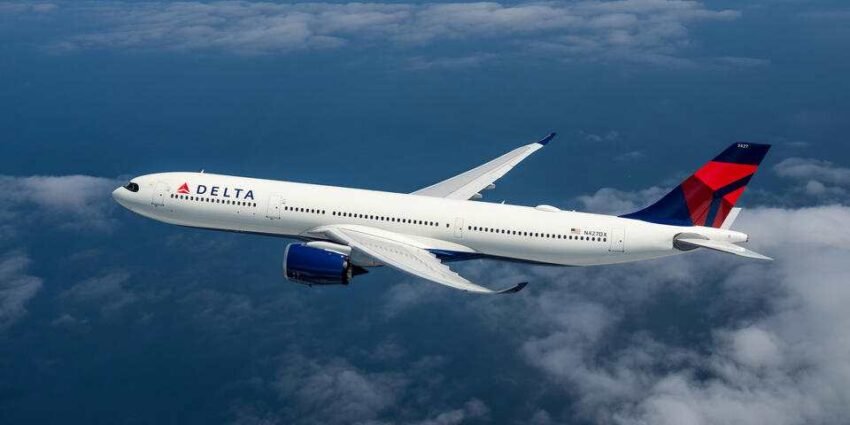
Delta Airlines is embarking on an ambitious new project to revolutionize air travel by partnering with aviation startup JetZero to create a radically new, sustainable aircraft. The collaboration, announced through Delta’s Sustainable Skies Lab, aims to bring JetZero’s blended-wing-body aircraft to life.
This aircraft is set to offer major improvements in fuel efficiency while pushing the aviation industry closer to achieving net-zero emissions by 2050.
Innovative Aircraft Design for a Sustainable Future
The new aircraft design, which looks and feels like nothing currently flying in commercial aviation, promises to be up to 50% more fuel-efficient than the conventional airplanes operating today. The new plane is designed with a flight range and seating capacity comparable to today’s mid-range international aircraft but uses existing engine technology.
The goal of this partnership is not only to create a revolutionary aircraft but also to meet Delta’s sustainability goals, including its net-zero emissions target by 2050.
Delta’s Sustainable Skies Lab, launched in 2023, plays a key role in supporting JetZero’s efforts to bring this unique design to reality. The lab’s focus is on finding innovative ways to reduce carbon emissions and enhance fuel efficiency within the aviation industry.
With the support of Delta’s lab, JetZero aims to launch the aircraft within this decade, marking a significant step in the quest for cleaner, more sustainable air travel.
Advancing Sustainable Aviation Technology
JetZero’s aircraft design is part of a broader effort to address the aviation industry’s carbon footprint.
Globally, aviation contributes around 2.5% of carbon dioxide emissions, a number that has grown faster than rail, road, or shipping industries between 2000 and 2019, according to the International Energy Agency.
The development of energy-efficient and sustainable aircraft like JetZero’s blended-wing-body model is critical in reducing the industry’s environmental impact.
JetZero’s Pathfinder model, a scaled-down version of the planned aircraft, received an airworthiness certificate from the Federal Aviation Administration (FAA) early last year, allowing the company to begin conducting official test flights. The FAA’s certification marks an important milestone in the project, validating the safety and feasibility of the new aircraft design.
Tom O’Leary, the cofounder and CEO of JetZero, highlighted the company’s mission to change the world with its sustainable aircraft. O’Leary noted that the new aircraft’s development would help reduce energy costs for airlines while significantly decreasing emissions. “The ability to realize such significant efficiency gains in the near future meaningfully impacts the industry’s commitment to reach net-zero emissions by 2050,” said O’Leary.
Delta’s Path to Sustainability
Delta Airlines is already making strides toward sustainability, including the construction of a sustainable aviation fuel (SAF) blending facility in Minnesota. This facility will support Delta’s ongoing efforts to replace fossil fuel-based jet fuel with sustainable alternatives, reducing the airline’s overall carbon emissions.
The partnership with JetZero builds on these initiatives, paving the way for a cleaner, greener future for air travel.
Conclusion: A Greener Future for Aviation
The partnership between Delta Airlines and JetZero represents a major leap forward in the quest for sustainable aviation.
With the potential for significant fuel efficiency gains and a commitment to achieving net-zero emissions by 2050, this new aircraft design could play a vital role in transforming the aviation industry. By developing and deploying this cutting-edge technology, Delta and JetZero are shaping the future of air travel and making meaningful progress toward reducing global carbon emissions.
The post Delta Airlines Partners with JetZero on Groundbreaking Sustainable Aircraft Design appeared first on Travel And Tour World.
Source link



















